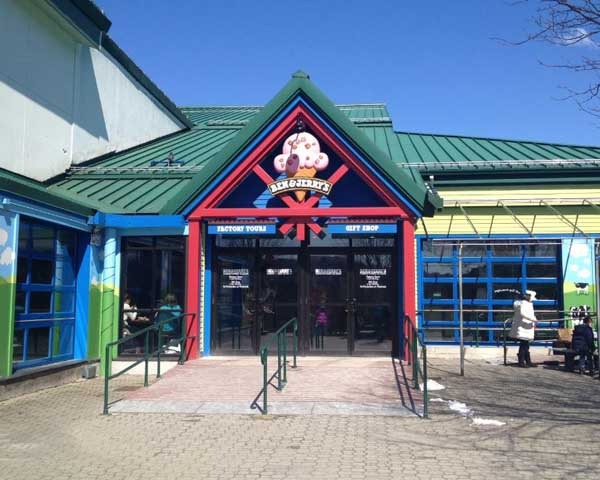A Trip Through The Ben & Jerry's Factory Floor
Making ice cream is both incredibly easy and super-complicated. You just add milk to a freezer and churn it up, right? Well, apparently not, especially when it's being produced on an industrial scale. Case in point: Ben & Jerry's, which hosts daily tours of its Waterbury, Vt., production facility. We had the opportunity to take a guided tour through their production process, and while unfortunately photos aren't allowed, we can tell you that it's a complicated system that involves lots of moving parts, giant tanks, pipes, and '60s music on the radio.
The tour guide brings visitors to a bridge that looks out over the production room, which is actually smaller than one might think, and requires only a few workers to be in the room itself at all times. Each machine is numbered, which makes it easy to know what you're looking at as the guide walks you through the process (otherwise your guess would be as good as anyone's). Here's how the process works:
1) The Blend Tank
A "base mixture" of milk, cream, egg yolk, and all-natural stabilizers, are combined in a 1,000-gallon tank. For chocolate ice cream, 300 pounds of cocoa powder is also added during this step.
2) The Pasteurizer/ Homogenizer
The mixture is then heated to 180 degrees and then quickly cooled, resulting in a completely clean product with an even consistency.
3) The Tank Room
The mixture is cooled even further, down to 36 degrees. The base mix now has the consistency of a wet milkshake.
4) The Flavor Vats
This is the point where liquid flavorings are added, including vanilla from Madagascar and coffee from Mexico.
5) The Freezers
The mixture then gets another freeze, bringing it down to 22 degrees.
6) The Chunk Feeder
Now's the point at which the "chunks," such as nuts, cherries, and chocolate-covered pretzels are added into the mix.
7) The Swirl Feeder
This process is the real Ben & Jerry's "secret sauce," and took years of trial and error to perfect. Caramel, fudge, peanut butter, and all the other "swirls" are added in here, evenly distributed throughout the mix.
8) The Automatic-Filler
Now the mixture finally heads into the pint containers. This machine can fill, cap, and flip 150 pints per minute, and requires two workers to keep a constant eye on things to make sure that everything is going smoothly. One is continuously adding containers and lids into the feeders, and the other watches as the now-filled pints pass through what they call a "Good Karma Machine," which is essentially a metal detector that makes sure no metal fragments snuck their way in. At this point the ice cream looks like this, which everyone who works for the company will tell you is ice cream at its most delicious:
9) The Spiral Hardener
Now comes the deep freeze. The pints are brought into a giant freezer that's kept at a temperature of 30 degrees below zero, where they go through a spiral-shaped contraption and come out the other side 90 minutes later frozen solid. If you think you can handle a trip into the spiral hardener, you might want to think again: It's also windy in there, and the wind chill reaches -70 degrees.
10) The Bubbler
The final step before being shipped off to a store near you is the bubbler, where eight pints are wrapped in plastic. Pro tip: Shops can order Ben & Jerry's one bubbler at a time, so if there's a flavor that they don't stock, just ask. If they're in a good mood, they just might order you some.
